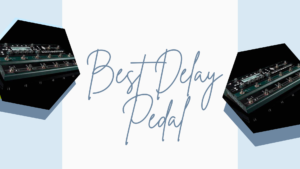
# Best Delay Pedal
As you step onto the stage, your guitar in hand, you can’t help but feel a surge of anticipation coursing through your veins. The crowd is waiting, their eyes fixed on you, and you know that every note you play will be amplified by the power of your delay pedal.
But with so many options out there, how do you choose the best one that will elevate your sound to new heights? Well, fear not, for in this discussion, we will explore the diverse world of delay pedals, from analog to digital, tape to multi-function, and even budget-friendly options.
So, buckle up, because we’re about to embark on a sonic journey that will leave you craving for more.
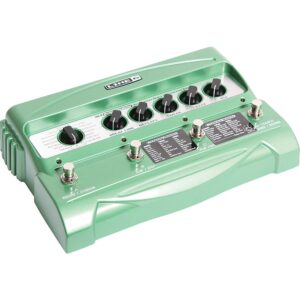
# Analog Delay Pedals
Analog delay pedals offer you, the guitarist, a warm and vintage sound that adds depth and character to your playing. These pedals are designed to replicate the natural decay of sound that occurs when a note is played in a physical space. Unlike digital delay pedals, which use algorithms to recreate the sound, analog delay pedals use actual electronic components to create the delay effect. This results in a more organic and natural sound that many guitarists prefer.
One of the main advantages of analog delay pedals is their ability to create a warm and rich tone. The delay effect produced by these pedals is often described as smooth and organic, adding a touch of vintage charm to your playing. The analog circuitry also adds a subtle modulation to the delayed signal, creating a sense of movement and depth.
In addition to their warm sound, analog delay pedals also offer a more intuitive and interactive playing experience. Many analog delay pedals feature simple controls that allow you to adjust the delay time and feedback to your liking. This hands-on approach allows you to easily dial in the perfect delay sound for each song or playing style.
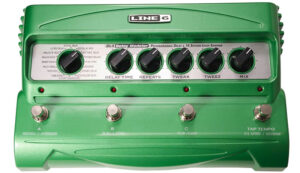
# Digital Delay Pedals
Now let’s explore the world of digital delay pedals and the unique features they offer guitarists.
Digital delay pedals use digital processing to create delay effects. One of the main advantages of digital delay pedals is their ability to provide longer delay times compared to analog delay pedals. With digital delay pedals, you can achieve delay times of several seconds, allowing for more experimental and atmospheric sounds.
These pedals also offer precise control over the delay time, feedback, and level parameters, giving you the ability to dial in your desired delay sound with accuracy.
Additionally, digital delay pedals often come with built-in tap tempo functionality, making it easier to synchronize your delay effects with the tempo of the music you’re playing.
Some digital delay pedals also include additional features such as modulation, reverse delay, and stereo outputs, expanding the sonic possibilities even further.

# Tape Delay Pedals
Tape delay pedals, known for their warm and vintage sound, are a popular choice among guitarists seeking to recreate the classic analog delay effects. These pedals simulate the effect of a tape machine, which was widely used in the past to create delay effects. The tape delay pedal works by recording the incoming guitar signal onto a magnetic tape, and then playing it back with a slight delay. This process results in a distinct and warm sound that can’t be replicated by other types of delay pedals.
One of the main advantages of tape delay pedals is their ability to produce a natural and smooth delay effect. Unlike digital delay pedals, tape delay pedals offer a more organic and musical experience. They add a rich texture and depth to your guitar tone, making it sound more alive and dynamic. Additionally, tape delay pedals often feature modulation controls, allowing you to add a subtle chorus or vibrato effect to the delayed signal.
Another advantage of tape delay pedals is their ability to self-oscillate. This means that by tweaking the feedback and delay time settings, you can create infinite repeats that gradually build up into a chaotic and mesmerizing sound. This feature opens up a whole new world of creative possibilities, allowing you to experiment with different textures and atmospheres.
In terms of popular tape delay pedals, the Strymon El Capistan and the Empress Tape Delay are often praised for their outstanding sound quality and versatility. These pedals offer a wide range of controls to fine-tune your delay sound, including tape age, flutter, and wow. Whether you’re playing blues, rock, or ambient music, a tape delay pedal can add that extra touch of vintage warmth and character to your guitar tone.

# Multi-Function Delay Pedals
Multi-function delay pedals offer a wide range of versatile features and options for guitarists seeking to expand their creative possibilities. With these pedals, you can experiment with different delay types, such as digital, analog, tape, and even reverse delay. They allow you to adjust parameters like delay time, feedback, and modulation, giving you full control over your sound.
One of the key advantages of multi-function delay pedals is their ability to store and recall presets. This means you can save your favorite delay settings and easily switch between them during live performances or recording sessions. Additionally, some pedals offer tap tempo functionality, allowing you to sync the delay time to the tempo of your music on the fly.
Another noteworthy feature of multi-function delay pedals is their ability to incorporate other effects into the delay signal path. This means you can combine delays with reverb, chorus, or even distortion to create unique and interesting sounds. Some pedals even offer multiple delay engines, allowing you to stack different delay types and create complex, layered textures.
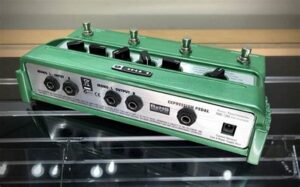
# Budget-Friendly Delay Pedals
Looking for an affordable delay pedal that doesn’t compromise on quality? Well, you’re in luck! There are plenty of budget-friendly options available that offer great sound and functionality without breaking the bank.
One such option is the Donner Yellow Fall Vintage Pure Analog Delay Guitar Effect Pedal. Priced at under $50, this pedal is perfect for those on a tight budget. It features a warm, vintage analog delay sound that adds depth and dimension to your guitar playing.
The MXR Carbon Copy Analog Delay is another excellent choice. At around $150, it offers a rich and warm delay tone with up to 600 milliseconds of delay time. It also includes modulation controls for added versatility.
Another great option is the TC Electronic Flashback Mini Delay Pedal. This compact pedal offers a wide range of delay sounds, including tape echo, analog delay, and reverse delay, all for under $100.
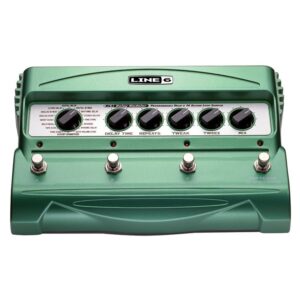
# Conclusion
So, there you have it, folks! Whether you’re a fan of the warm and vintage tones of analog delay, the versatility and precision of digital delay, the unique character of tape delay, or the multitude of options offered by multi-function delay pedals, there’s a delay pedal out there for everyone.
And the best part? You don’t have to break the bank to get your hands on a great delay pedal, as there are plenty of budget-friendly options available.
Happy delay pedal hunting!
